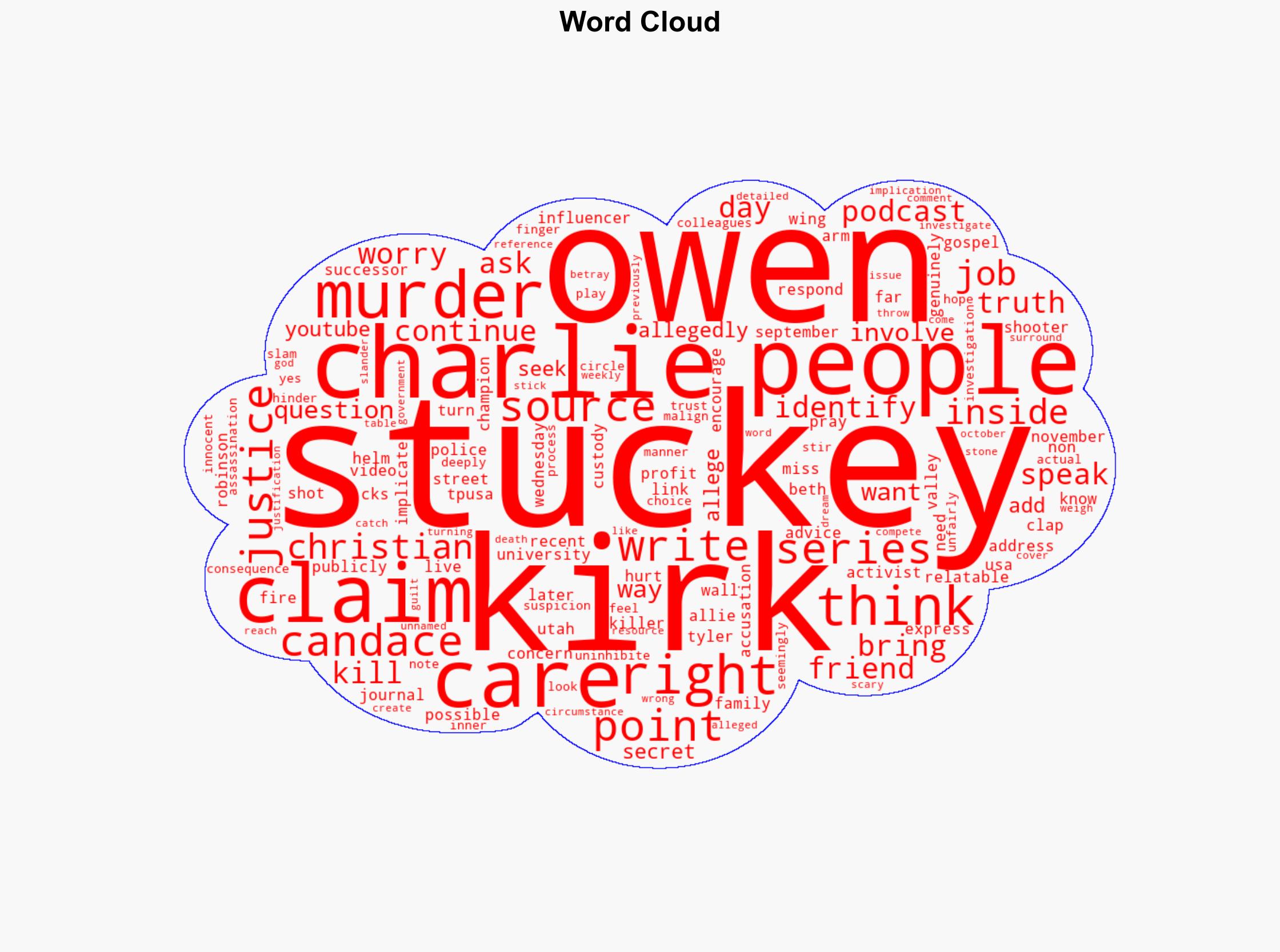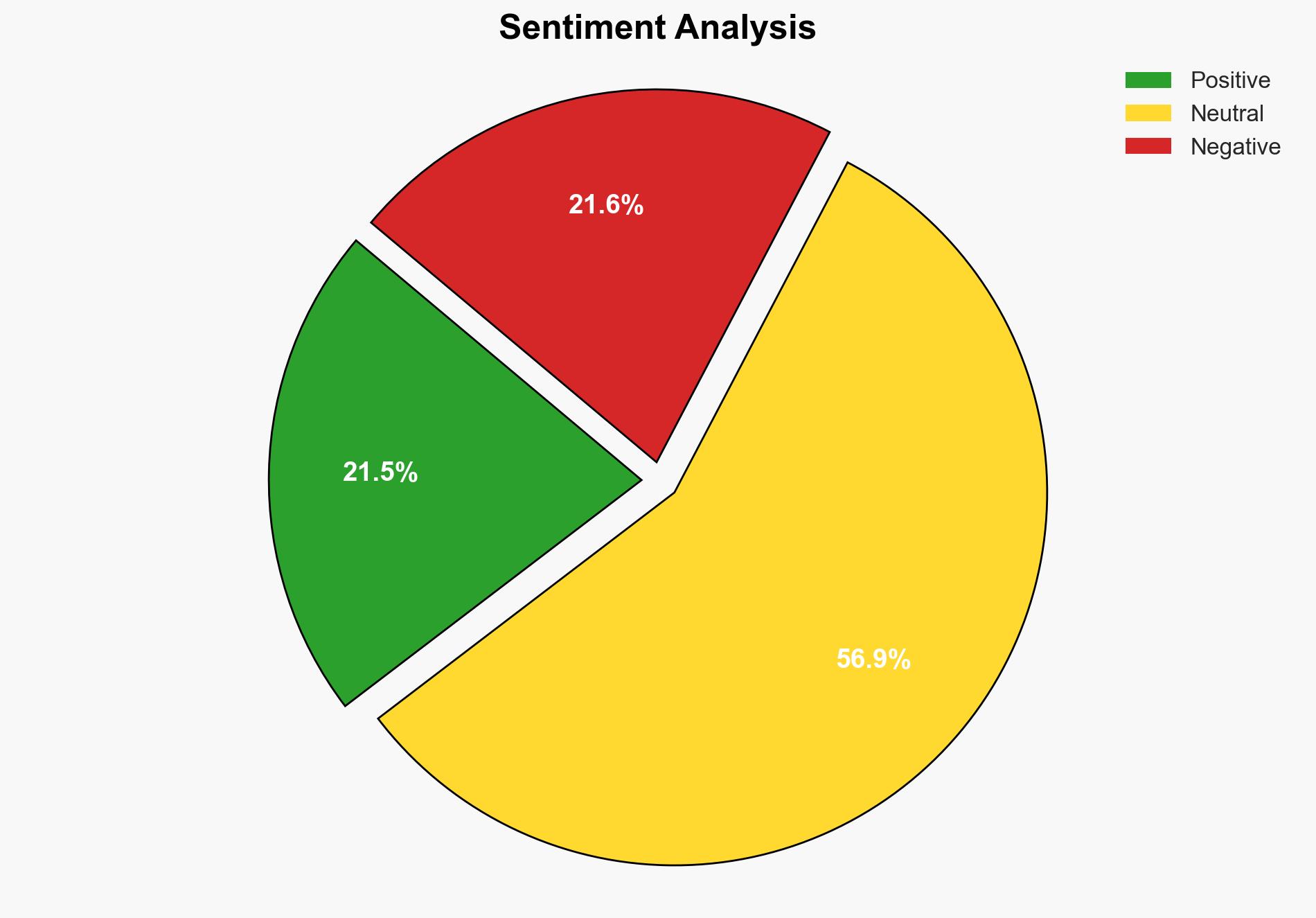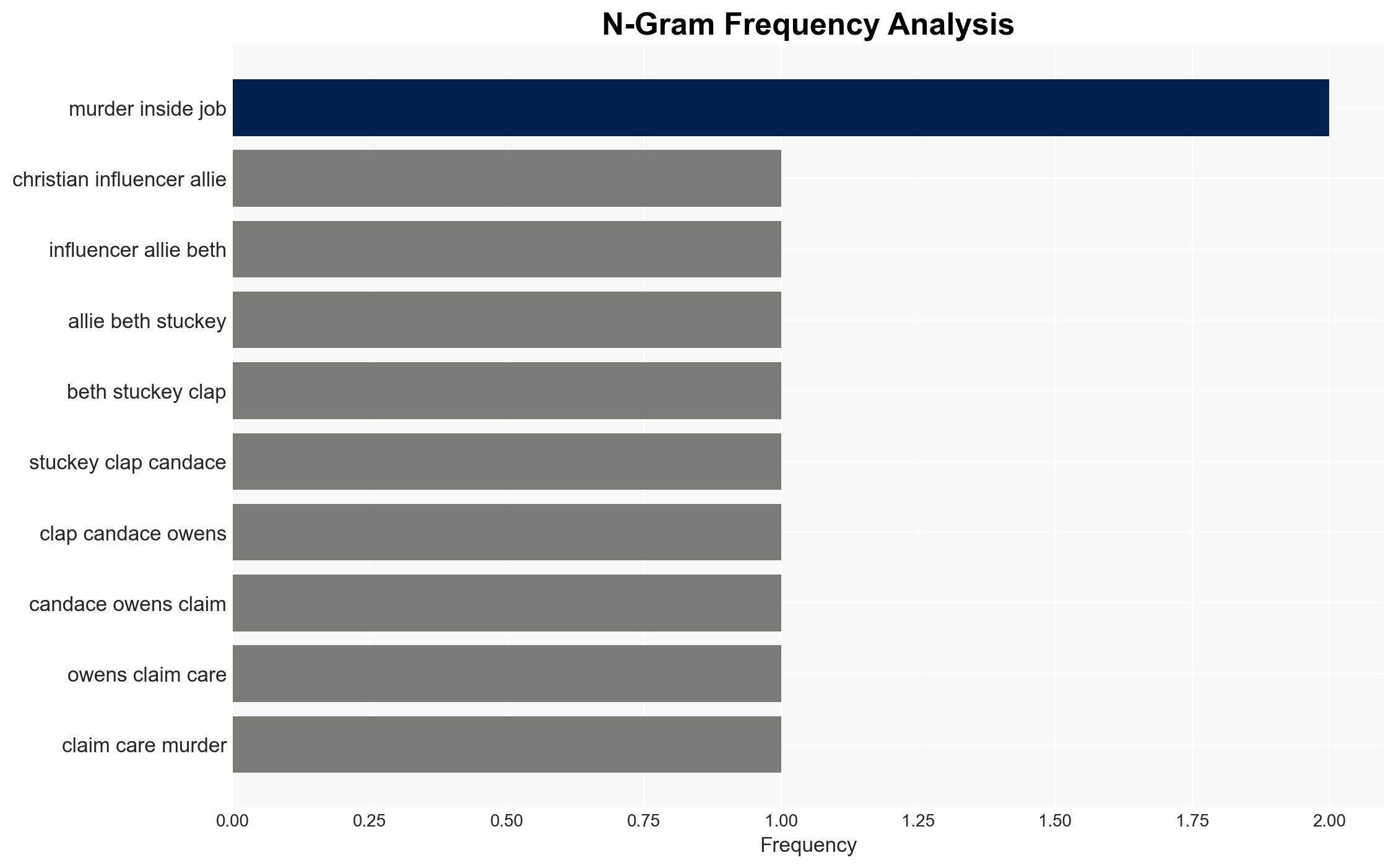Allie Beth Stuckey Slams Candace Owens’ Charlie Kirk Murder Theories – Us Weekly
Published on: 2025-11-14
AI-powered OSINT brief from verified open sources. Automated NLP signal extraction with human verification. See our Methodology and Why WorldWideWatchers.
Intelligence Report: Allie Beth Stuckey Slams Candace Owens’ Charlie Kirk Murder Theories – Us Weekly
1. BLUF (Bottom Line Up Front)
There is significant tension between Allie Beth Stuckey and Candace Owens regarding theories about Charlie Kirk’s murder. The most supported hypothesis is that Owens’ claims are speculative and potentially harmful to the investigation and public perception. Confidence Level: Moderate. Recommended action: Monitor the situation for further developments and potential impacts on public discourse and organizational stability.
2. Competing Hypotheses
Hypothesis 1: Candace Owens’ claims are speculative and lack substantial evidence, potentially aimed at drawing attention or influencing public perception.
Hypothesis 2: Owens possesses credible information that could substantiate her claims, but it is not yet publicly disclosed.
Assessment: Hypothesis 1 is more likely given the lack of corroborating evidence and the speculative nature of Owens’ statements. Stuckey’s response suggests a lack of credible support for Owens’ theories.
3. Key Assumptions and Red Flags
Assumptions: Owens’ claims are based on unverified sources; Stuckey’s response reflects a broader concern for the integrity of the investigation.
Red Flags: Owens’ reliance on unnamed sources and potential for misinformation; Stuckey’s public rebuttal indicates possible internal discord.
Deception Indicators: Lack of concrete evidence supporting Owens’ theories; potential for sensationalism.
4. Implications and Strategic Risks
The public dispute may lead to reputational damage for involved parties and organizations, such as Turning Point USA. It could also influence public trust in media narratives and investigative processes. Escalation could occur if further unsubstantiated claims are made, potentially leading to legal or organizational repercussions.
5. Recommendations and Outlook
- Monitor media and social media channels for further developments and shifts in public sentiment.
- Encourage responsible communication and fact-checking among influencers and media outlets.
- Best-case scenario: The situation de-escalates with a focus on factual investigation outcomes.
- Worst-case scenario: Continued speculation leads to misinformation and undermines public trust.
- Most-likely scenario: The dispute remains a media topic but does not significantly impact the investigation or organizational stability.
6. Key Individuals and Entities
Allie Beth Stuckey, Candace Owens, Charlie Kirk, Turning Point USA
7. Thematic Tags
National Security Threats, Media Influence, Public Perception, Organizational Stability
Structured Analytic Techniques Applied
- Cognitive Bias Stress Test: Expose and correct potential biases in assessments through red-teaming and structured challenge.
- Bayesian Scenario Modeling: Use probabilistic forecasting for conflict trajectories or escalation likelihood.
- Network Influence Mapping: Map relationships between state and non-state actors for impact estimation.
- Narrative Pattern Analysis: Deconstruct and track propaganda or influence narratives.
Explore more:
National Security Threats Briefs ·
Daily Summary ·
Methodology





